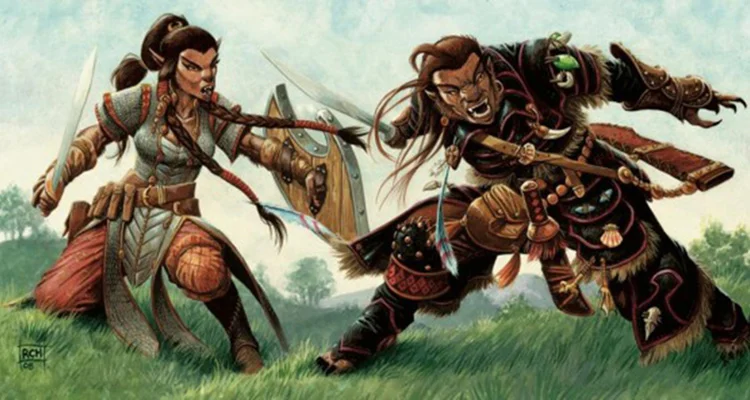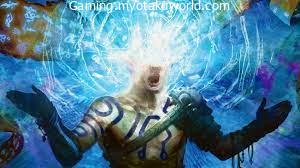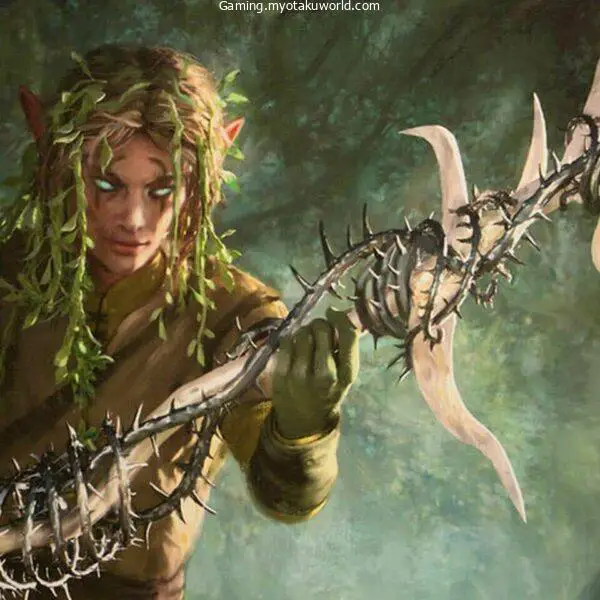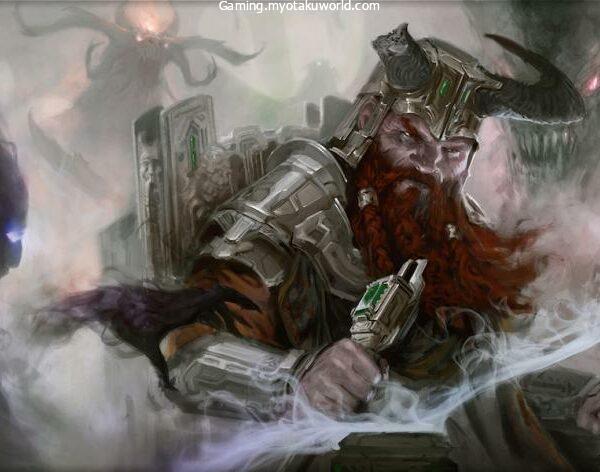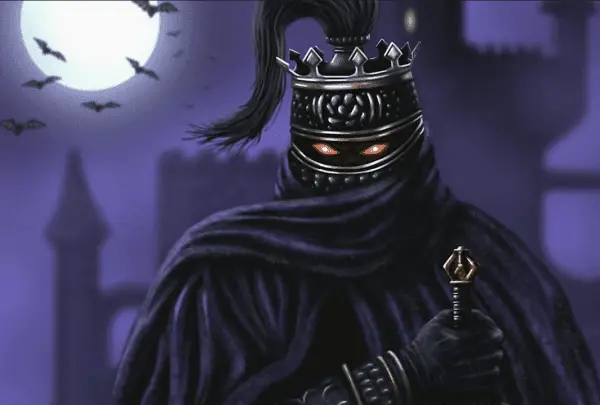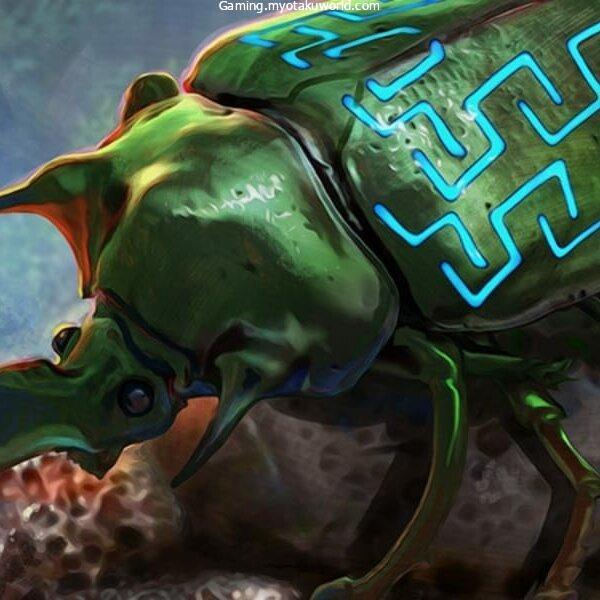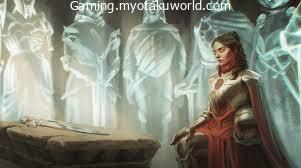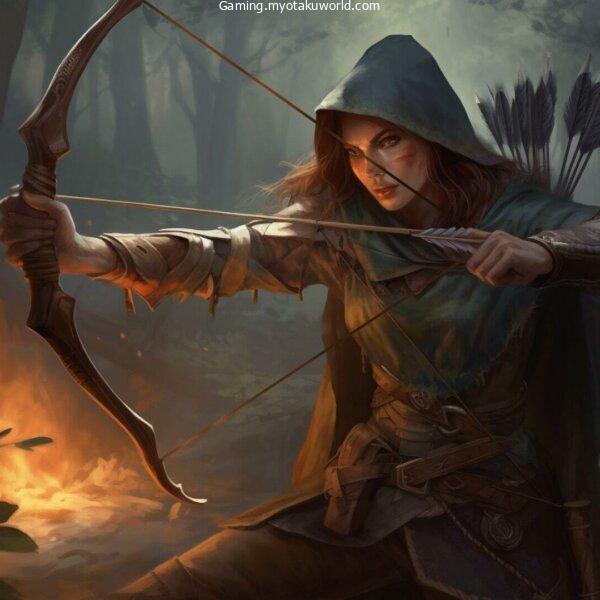In Dungeons & Dragons 5th Edition, shifters are fun and thematic race that players can choose to be.
What are they, though? What are their characteristics? And what classes should they take?
This guide for new D&D 5e players will help you learn more about the Shifter player race and how to start playing one.
Let’s start by talking about what Shifters are in 5e, what they do, and from which book they come.
What are Shifters?
In D&D 5e, shifters are a playable race. The fact that they have animal ancestors and can change into animals is what makes them unique.
Shifters are a type of creature in D&D 5e that is a mix between a human and an animal. They have some kind of connection with a wild side that is like an animal in some way.
Shifters are called that because they can change into a more animal-like form. Even though this isn’t a full shapeshift, they take on stronger parts of the animal that represents them. This makes them stronger physically.
Some people of this race say they are related to werewolves. Still, they are not lycanthropes because they can’t change shape and can’t heal from damage.
What Book Has Shifters for 5e?
The 5e supplement book Eberron: Rising from the Last War has information about shifters.
Shifters first came out with the testing materials for Races of Eberron Unearthed Arcana (UA). But some changes were made to the race between the test version and the final version.
What Shifters Look Like?
In 5e, shapeshifters often have physical traits that show their animal origins. Because of this, they often look like a mix between a human and an animal.
Because each Shifter is like a certain animal, they often look like a mix of that animal and a human. Still, they look more like people than not.
For example, a Wildhunt Shifter (we’ll talk about the subraces later) might have a slightly longer nose like a dog, and a Swiftstride Shifter might have eyes like a cat. But with these animal-like features, both of these Shifters would still look like humans.
Even better, shivers from the same subrace can have different looks based on how animal-like they are.
A Beasthide Shifter could be big and strong like a bear or short and strong like a boar. Based on their animal ancestry, it’s up to you to decide what your Shifter looks like.
Examples of Shifter Names
A shifter’s name is often based on how they look or what animal they came from. Since they don’t have their language, they take their names from the languages they grew up with or near.
In 5e, shifters have names that match the area where they were born. Depending on where they were born, these names could be in Common, Elvish, Gnomish, Orcish, or any other language.
Still, shirkers often give people a “wandering name” when they meet them for the first time. This is a nickname that makes fun of some part of how they look or act like a beast. Something that reminds them of the animal that stands for them.
In the original version of the UA for 5e Shifters, there were some examples of names that showed how they should be called:
Shifter Names: Badger, Bear, Cat, Fang, Grace, Grim, Moon, Rain, Red, Scar, Stripe, Swift, Whiskers, Wolf
Shifters have given names that they share with friends and family and that follow typical naming patterns for their homes. When they talk to strangers, they use a nickname that shows their animal bond.
5e Shifter Traits

All of the traits of a Shifter’s race have something to do with their animal form. Shifting is what makes them unique. It lets them take on more animal-like traits to improve their physical strength.
When figuring out the size of an animal, shifters are counted as Medium-sized. Because of this, they can move at the normal Medium creature speed of 30 feet. They also learn one language.
Aside from that, being a Shifter doesn’t give you many other traits. Most of what makes you who you are, like your Ability Score Increase, comes from your subrace.
Still, just by being a Shifter, you do get a form of Darkvision. This makes sense since many of the shifter subraces are based on animals with sharper senses that hunt for food.
Lastly, every shifter, no matter what subrace they are, can shift. This trait is what makes shivers who they are and is the most important thing to know about the race.
Shifting
When a Shifter character shifts, their animal features become more pronounced. This might come in the form of more stamina, sharper claws, or better senses.
Shifting is the defining trait of the Shifter race. Based on the subrace you choose, it gives your character a set of bonuses.
When you shift, you use your bonus action, and it only lasts a minute. When you shift, you get temporary Hit Points and the benefits of your subrace. Lastly, you can only change positions once every rest.
So, now that you know the basics of how the Shifter’s Shifting trait works, let’s look at the four Shifter subraces to get a better idea of the bonuses you get while shifted.
Shifters Subraces
In D&D 5e, you can choose from four different subraces for the Shifter race: Beasthide, Longtooth, Swiftstride, and Wildhunt.
Each subrace is related to or descended from a different animal and has traits that match that animal.
Each subrace of a Shifter is like a different kind of animal. Not so much about breeding or even being a predator or a victim, but more about how they look.
Your choice of subrace affects your character’s Ability Score Increase and a few other things that set them apart from the other characters. It also tells you the best way to play with your character.
The four types of Shifter are:
- Beasthide
- Longtooth
- Swiftstride
- Wild hunt
Let’s look at each of these quickly to see how they are different.
Beasthide
Beasthide Shifters are the most durable of the subraces. Their animal nature is similar to that of bears, boars, and other animals known for being tough.
This subrace of shapeshifters has a bond with one of the world’s toughest animals. So, bears, boars, and rhinoceroses are good choices for your representative beasts.
This shiver subrace gives you an ability score increase, which raises your constitution and strength and makes you stronger and more durable.
You also get a Skill proficiency that highlights the fact that Beasthide Shifters are good at physical tasks.
Your Shifting Ability makes your character more durable while shifting by giving you more Temporary Hit Points and making your Armor Class higher.
Longtooth
Longtooth Shifters are like active predators because of how they look and act. Some animals that represent them are wolves, hyenas, and other pack hunters.
These Shifters have a bond with animals that shows how strong they are as hunters and predators.
Your Ability Score Increase makes your strength and dexterity better, showing that Longtooth Shifters are hunters who are strong and quick.
For social encounters, you also get a Skill proficiency that shows how fierce you are.
The Shifting Feature of the Longtooth Shifter lets them use their fangs in an unarmed strike bonus action that does more damage than a normal unarmed attack.
Swiftstride
Swiftstride Shifters are faster and more agile than the others. They are like animals like big cats and deer, which move quickly and can change direction.
These shifters are a little less clear in how they look. They could be sneaky and silent hunters like cats. Or, they could move quickly and gracefully like a deer.
Or, even skittish and fast like a rodent. Swiftstride Shifters are known for being quick and not caring what other people think.
The Swiftstride Shifter Ability Score Increase emphasizes their agility by making their dexterity better.
You also get a bonus to Charisma, which seems strange since they are supposed to be related to animals that aren’t friendly.
But I guess it makes sense for someone who knows how to deal with people to…avoid them.
Your skill level also shows how fast Swiftstride Shifters can move.
Lastly, the Shifting Feature of these Shifters shows how fast they are by making them move faster and changing how they move in battle.
Wild hunt
More than the other subraces, Wildhunt Shifters use their senses. A Wildhunt Shifter’s “representative animal” could be any kind of hunter that is good at finding its prey.
Shifters of the Wildhunt are animals that are always on guard. Most of the time, this means animals that are on the lookout for danger, like some rodents, or animals that are good at tracking, like dogs.
Wild-hunt Shifters get an Ability Score Increase that gives them a bonus to their Wisdom and Dexterity stats. You also get a skill proficiency that helps your character track and explore the wild.
The Wild Hunt Shifters’ Shifting Feature helps your character notice things better. It also makes it harder for enemies to hit your character by taking away any bonuses they might have.
Classes Good for Shifters

Several classes are good for Shifters because their Ability Score Increases make them good for them. Shifters should choose classes like Barbarian, Fighter, Monk, Paladin, Ranger, and Rogue who are good at fighting.
Many classes are good for Shifters because they offer a wide range of subraces.
Now, I won’t take into account how Tasha’s Cauldron of Everything changed racial traits. I used the default, base Ability Score Increases from Eberron: Rising from the Last War for Shifters. A shifter can use any class with Tasha’s.
Even so, the theme or mechanics of a class might not fit with the racial traits.
Without further ado, let’s take a quick look at each 5e class and see if it’s good for Shifters or not.
Artificer
Shifters shouldn’t choose Artificer as their class. An artificer’s main spellcasting ability is based on their intelligence, which isn’t improved by any of the shifter subraces.
As an Artificer, the toughness of Beasthide or the speed of Swiftstride Shifters could help you stay safe, but only in rare situations.
Barbarian
The Barbarian class is a good choice for 5e Shifters. Many of the subraces you can choose from as a barbarian in 5e work well, with good Ability Score Increases almost everywhere.
So, your bonus action is used by both the Rage Barbarian class feature and the Shifter’s Shifting racial trait. So, they will try to beat each other.
Bard
Bard isn’t the worst class pick for shirters, but it’s not great. Only the Swiftstride subrace grants a bonus to your Charisma score, so Bard’s spellcasting and other class features suffer.
Also, none of the traits of Shifting helps the Bard.
Cleric
Shifters can choose the Cleric class. The wild hunt subrace raises your wisdom stat, which means that your spellcasting and class features could get a small boost.
On the other hand, any Shifter subrace could be used to play a Cleric who is good at fighting with their hands. Even so, Shifter isn’t the best race for a Cleric to combine with.
Druid
As a class choice for shifters in D&D, Druid is just okay. You might be able to play as a wild hunt shifter if you get an Ability Score Increase for Wisdom.
But it’s possible that the Shifting trait and the Wild Shape class feature won’t work together.
Fighter
Shifters should choose “Fighter” as their class. Both Beasthide and Longtooth Shifters work well for both defensive and offensive fighter builds, and both offer Ability Score Increases that work well for classic fighter builds.
The Shifting Feature of the Longtooth is great because it gives Fighters something to do as their bonus action and helps them do more damage.
Monk
Shifters in 5e should choose the Monk class. The Wildhunt subrace makes your stats better in the main Ability Scores of a Monk.
Still, the Swiftstride Shifting Feature makes you even more mobile, which makes the Monk even scarier as they zip around the battlefield.
Paladin
As a sifter, the Paladin is a good class to choose. Swiftstride Shifters give bonuses to your Ability Scores that fit a Paladin build based on Dexterity.
They also help you cast spells by raising your Charisma stat. Still, the Beasthide and Longtooth subraces are great for Paladins who like to fight because they make them stronger and do more damage.
Ranger
Shifters should choose “Ranger” as their class. The Wildhunt subrace gives bonuses to Wisdom and Dexterity, which is good for Rangers who want to use spells or fight in the usual way. Still, the Shifting Feature isn’t very useful because it’s more of a defense.
Longtooth Shifters also work well for Rangers who focus on combat, but their “Shifting Feature” is likely to conflict with casting “Hunter’s Mark,” since both of them use your “bonus action.”
Rogue
As a shifter, you should play as a rogue. The Swiftstride subrace helps a rogue stay mobile by making it easier for them to use their shifting feature to get out of a fight.
Also, the Ability Score Increases work well for a Rogue who can get along with other people.
Sorcerer
Sorcerer is a good class for shirmers to choose in 5e, but it’s not the best. Since the Swiftstride Shifter can raise their Charisma score, it might be the best subrace for this class. Also, Beasthide and Swiftstride may help a sorcerer stay alive, but they don’t change the way the class is played.
Warlock
Shifters shouldn’t choose Warlock as their class because the class doesn’t have any traits that help it. Only the Swiftstride subrace increases Charisma, so any other choice hurts the Warlock’s ability to cast spells.
The Beasthide and Swiftstride Shifters have Shifting Features that may help a Warlock stay alive, but they don’t help the class’ features directly.
Wizard
In D&D, shifters shouldn’t choose the Wizard class. Because their intelligence doesn’t go up, a Shifter Wizard can’t cast spells as well.
The Beasthide and Swiftstride subraces help a Wizard stay alive longer, but they don’t help a Shifter in this class do anything else better.
FAQs
Are Shifters Shapechangers?
No, not really. In D&D 5e, shapeshifters are not the same as shifters. In 5e, shifters don’t have a tag or trait that says they can change their shape. So, spells and other effects that affect shapeshifters don’t count them as shapeshifters.
Are Shifters Fey in D&D?
No. In D&D 5e, shifters are not Fey. They are a type of creature called “humanoid.”So, spells that can find or affect Fey can’t be used on Shifters.
Can Shifters Turn Into Animals?
No, shapeshifters in 5e can’t become animals. Because of their Shifting ability, they can take on a more animal-like form, but they can’t turn into animals. It’s kind of up to your GM to figure out what it means. But most of the time, the Druid class or spells like polymorph are the only way to fully change into an animal.
Is Shifting a Bonus Action?
Yes. Shifting is a bonus action that the Shifter has as a trait. This means that Shifters can use their bonus action to change into a more animal-like form and then take their regular action on the same turn.
Summary
That’s all you need to know about D&D 5e shifters.
In the 5e book Eberron: Rising from the Last War, there is a race called “Shifter” that can be used. They are a group of people who say their ancestors were lycanthropes or had some other supernatural connection with an animal that represents them.
Their main race trait, “Shifting,” gives them bonuses based on which of the four subraces you choose: Beasthide, Longtooth, Swiftstride, or Wildhunt.
Lastly, because Shifters have a lot of different subraces, many classes in 5e are good for them, but the martial classes are best.
